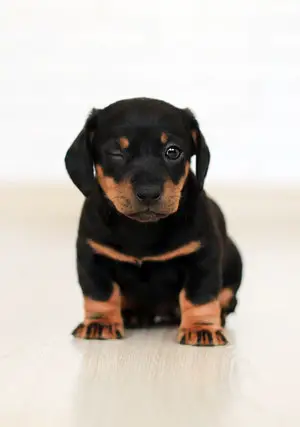Does your dog have hair loss around his eyes? It may be due to a number of different reasons. Alopecia, Allergies, Dermatitis, and Demodicosis are all some of the reasons why a dog might have hair loss on his face.
It’s important to know that the vast majority of cases of hair loss around your dog’s eyes will completely return to normal once the underlying issue is taken care of. Before we start looking at what causes this and how you can help, it’s worth noting that most dogs only lose their eye fur for a short period before returning back to their original state.
There are many reasons why these pets may experience temporary hair loss in one area or another. Luckily, there are some common treatments that should alleviate it.
Alopecia in Dogs
This is a skin disease in both humans and animals that affects an animal’s coat, often resulting in patches of baldness or other changes to the normal appearance of their fur.
The underlying cause of this condition ranges from genetics to allergies to skin diseases that result in inflammation, which causes the hair follicles to die off. Luckily, there are many treatments available depending on what has caused your pup’s alopecia!
Allergies
Allergic reactions can be caused by just about anything and they often result in a dog’s coat losing its color, becoming brittle or thinning.
The most common culprits of allergies are fleas, food-related allergies, and environmental allergens like dust mites, plant pollens, or animal dander.

The mucous membranes around the eyes are highly sensitive to the pollen and dust in our environment.
When they are exposed to these allergens, the dog’s eyes may water as a self-defense mechanism.
This is often enough for their tears and mucous membranes to trap the allergen in contact with the hair follicles on their face that line near their nose, mouth, or eyes.
Dermatitis
Did you know your dog’s constant rubbing at their face and eyes can lead to dermatitis or skin infection?
Dermatitis is a condition in which the skin becomes inflamed. It can be caused by allergies, bacteria, or other underlying conditions that affect your dog’s hair follicles near his nose and mouth where he has excess facial hair.
If left untreated, dermatitis may lead to secondary bacterial infections on his eyelids. The eyelids and the hair around them can become inflamed.
If left untreated, this condition will worsen or lead to further infection in the eyes themselves. If your dog has been diagnosed with dermatitis, the skin around his eyes may become red and inflamed.
He might also have scabs or lesions on this area of his face.
The most common causes are allergies (most commonly caused by a pollen-based allergy) or an underlying bacterial infection of the hair follicles that leads to hair loss.
Demodicosis
One cause of dog dermatitis is Demodicosis, a type of mite that lives on the skin.
This type of mite is typically found in dogs who are immune-suppressed, such as those with an under-active thyroid gland. The Demodex mites cause the hair follicles to become plugged and inflamed, leading to lesions on the skin.
Demodicosis can be difficult to diagnose due to its lack of symptoms. If left untreated for too long it could lead not only to local infection but also problems affecting other tissues like lungs or heart muscles.

In an otherwise healthy dog with Demodex mites this should pose no problem as they are usually harmless – unless some unforeseen event leads them out their numbers stay low enough for your pet’s immune system will keep things under control.
If you notice any changes such as loss of fur around his eyes or mouth then don’t wait before consulting a veterinarian!
What to Do If a Dog Loses Hair Around the Eyes?
Your pet’s eyes are the first thing to notice if they start losing fur around them. If you see any signs of dryness or a rash, your vet should be contacted before it worsens and becomes permanent. Your veterinarian will examine the eye as well as potentially perform tests for glaucoma and other issues that could permanently affect your pup’s vision in order to determine what is causing his hair loss.
The veterinarian may also take skin scrapings from around their mouth area where mites can often live which causes him/her discomfort when trying to eat food because there isn’t enough saliva needed on these areas due to dehydration.
If none of those things were found then check over all over the body with an experienced professional who has seen many types of cases. They will check over the rest of your dog’s body for hair loss and ask you about any other pets in the house that may be showing similar signs.
